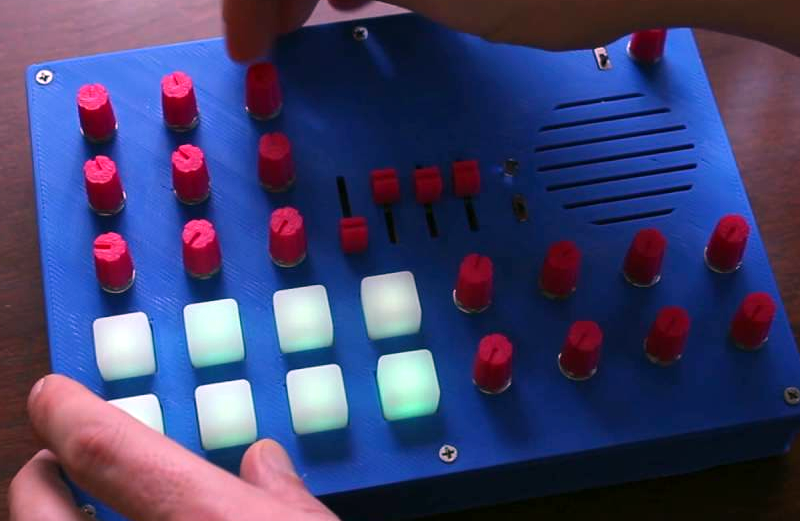[Otermrelik] wanted to experiment with the Teensy audio library and adapter. That, combined with his 3D printer, led to a very cool looking build of the teensypolysynth. The device looks like a little mini soundboard with sliders and 3D printed knobs. You can see (and hear) it in the video below.
The Teensy audio library supports several output devices including several built-in options and external boards like the audio adapter used here. The library does CD-quality sound, supports polyphonic playback, recording, synthesis, mixing, and more.
 Even more interesting is there is an audio design tool that runs in your web browser for building the audio portion of your code graphically. Even though it is in a browser, it isn’t tied back to a server so you can run the tool offline and you don’t have to worry about your world-changing audio design leaking out on the Internet. Browsing the tool is a good way to get a feel for just how much capability the library provides.
Even more interesting is there is an audio design tool that runs in your web browser for building the audio portion of your code graphically. Even though it is in a browser, it isn’t tied back to a server so you can run the tool offline and you don’t have to worry about your world-changing audio design leaking out on the Internet. Browsing the tool is a good way to get a feel for just how much capability the library provides.
The tool can export code you add to your project and can import it again, too, if you need to make changes. Overall, it is very slick. Of course, the library does all the work, as you can see from this simple exported code:
#include <Audio.h> #include <Wire.h> #include <SPI.h> #include <SD.h> #include <SerialFlash.h> // GUItool: begin automatically generated code AudioSynthWaveform waveform1; //xy=344,303 AudioInputAnalog adc1; //xy=351,227 AudioMixer4 mixer1; //xy=485,230 AudioEffectFlange flange1; //xy=657,237 AudioFilterFIR fir1; //xy=804,233 AudioOutputAnalog dac1; //xy=947,227 AudioConnection patchCord1(waveform1, 0, mixer1, 3); AudioConnection patchCord2(adc1, 0, mixer1, 0); AudioConnection patchCord3(mixer1, flange1); AudioConnection patchCord4(flange1, fir1); AudioConnection patchCord5(fir1, dac1); // GUItool: end automatically generated code
The build details are a little light, but between the code, the pictures, and the 3D printable files you can probably figure it out. Your layout might be a little different, but you’d probably want that anyway.
We’ve talked about the Teensy audio library before, and we are still impressed. If music synthesis isn’t your thing, don’t worry. You can’t help but love this voice changer.

















no see – when I read the title I thought cool making music with a 3d printer (ie like a bunch of floppy drives making music)
but I gotta say what a neat looking (and sounding) project…
I’d argue the 3D printer in this case isn’t necessary… there are project boxes available that would likely look as good if not better.
That said, he’s done a nice job designing it all. The audio library is doing all the heavy lifting of course, but it sounds like a quite capable synth. The fact it has less than one 10th of the buttons of a regular synthesizer keyboard doesn’t appear to be much of a limitation here.
My friend’s one year old has a keyboard with a similar type of limited musical ability. Not much different than taking a lot more than just the W off of the textual keyboard. Find a thrift store kids full keyboard and hack it to the rest of what you have. Yes, a retro or modern ready made case still has more going for looks than most 3D prints. One could easily stuff the project into one of those gaudy colored dinosaur shaped keyboards! Pianosaurus, it was mechanical tinkle bell style toy. Another alternative is to make a 3D print that is novel not just another squared box.
The advantage of stuffing electronics into an existing keyboard is that you can use the useless “demo” button to play Shooting Stars (the one from 2009) and dive into space.
No, 3D printing the button does not give the same feel…
Stop using 3d printers to make boxes. It looks like garbage every time.
By designing them and using them takes 3D printing and our skill further. So what if you see garbage dude. Some of us see potential. So it would be preferable to try constructive criticism and point out the bad or poorly designed details.
interesting! Thanks